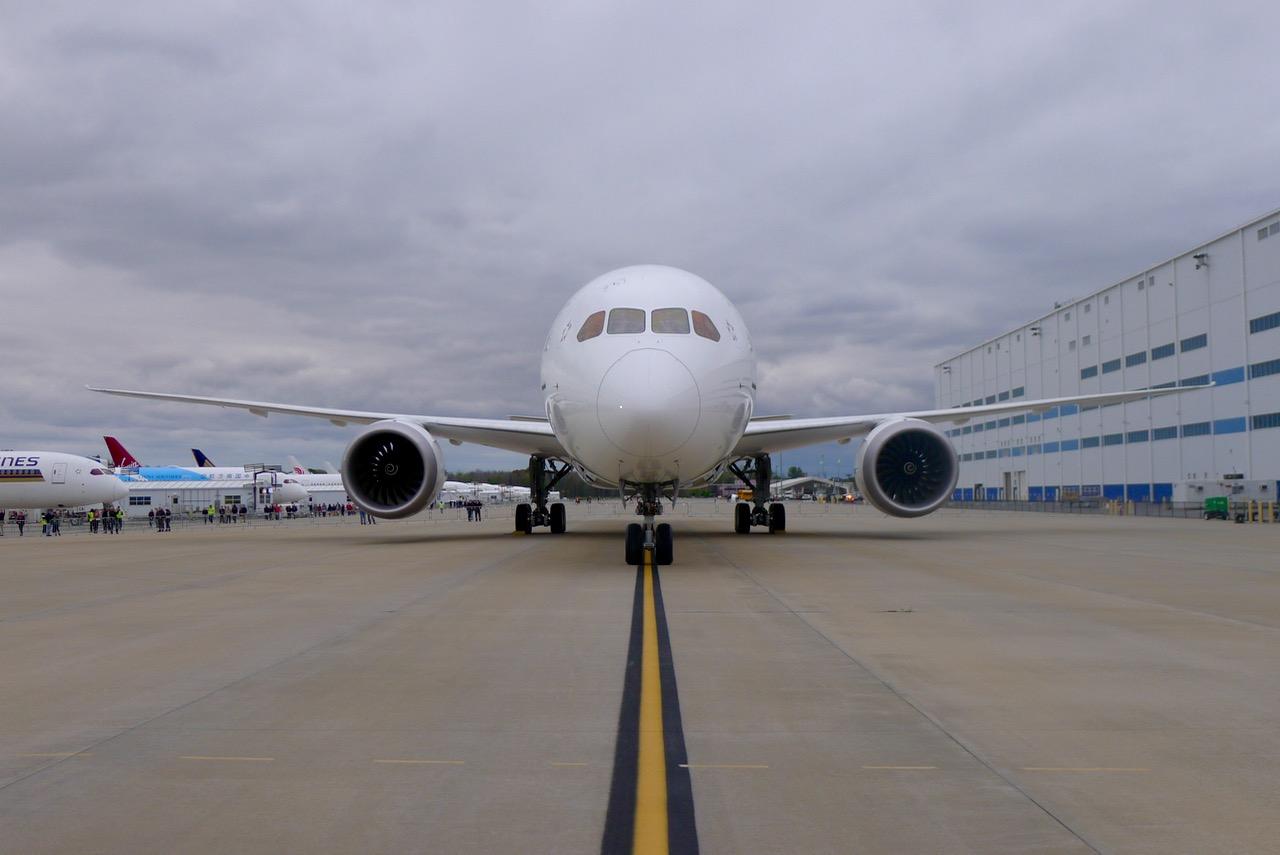
Boeing’s struggles to get 787 deliveries back on track amid production issues and needed pre-delivery re-work are showing few signs of easing, executives with a key customer and major supplier suggest.
“It’s clear that the production issues that have arisen on the 787s seem to have mushroomed,” Air Lease Corp. CEO John Plueger told analysts on a Feb. 22 earnings call. “As yet today, it’s difficult to see a definitive fix that is agreeable by the aviation authorities and all going forward.”
Boeing has not delivered a 787 since October 2020. A backlog of more than 80 aircraft has formed as the manufacturer inspects completed aircraft and addresses quality issues. Chief among them is a skin-smoothness issue that affects areas where subassemblies, such as fuselage sections, join. The company also is reviewing whether shims, used to fill space between subassemblies, and horizontal stabilizers meet engineering specifications.
Spirit AeroSystems, which supplies several parts of the 787, including its integrated nose and forward fuselage, or section 41, confirmed that it is analyzing at least some of the structure it supplies as part of Boeing’s effort to stem the production issues.
“We’ve been working very closely with Boeing in terms of trying to understand the whole production system and doing the analysis that they have requested,” Spirit CEO Tom Gentile said on a Feb. 23 earnings call. “Our understanding is they’re also doing analysis in other sections of the aircraft, but those are not really visible to us. We’re focusing on our work package with Boeing, and what we’re doing is based on feedback that they’ve gotten from their own investigations in other parts of the aircraft. They’ve asked us to perform similar engineering analysis on the sections that we do.”
Gentile said Spirit has “started some re-work” to help ease Boeing’s workload down the road. “As we get all of the engineering analysis done, we’ll determine in the long term what type of rework is done. You do the engineering analysis, and you understand whether the area is acceptable as it is or if it could require some rework. In addition, to the extent that we need to change some of our production process in the future, we will do that.
The delivery delays “did impact our shipments in the fourth quarter,” Gentile said. “We expect that once the reviews are complete that Boeing will be able to resume shipments of the 787 again, and we will continue to ship to our current schedule, which is at about five per month.”
While some customers are pushing deliveries back due to the dip in demand linked to the global coronavirus pandemic, Boeing executives said in January that stepped-up inspections were the primary reason 787 deliveries have halted.
“Based on what we know today, we expect 787 deliveries to resume later this quarter,” Boeing CEO Dave Calhoun said on a Jan. 27 earnings call. That projection included none in January and “very few, if any,” in February.
It is not clear if Boeing’s time line has changed. The company declined to provide an update, instead pointing to the January comments.
“It’s still an unfolding story,” Plueger said. “I wish I could say that we know definitively there was an end to it and when [deliveries] would start. I also don’t mean to say that things could go on for months and months and months. We just don’t know, and we’re just waiting for more definition from The Boeing Company.”
Air Lease Corp.’s 361-aircraft order book as of Dec. 31, 2020 included 34 787s, with 14 due for delivery in 2021. Plueger said “a number” of aircraft in the current delivery queue are destined for Air Lease customers. Some are either close to or more than 12 months delayed, which means Air Lease can walk away with little or no ramifications.
“The decision as to cancellation is largely driven by our customers,” Plueger said. “We give that customer the same right that we have, that if it’s greater than 12 months [they can cancel without penalty]. So, suffice it to say, we’re working with those impacted customers, and we will take action ... based upon what those customers want to do.”
Air Lease executive chairman Steven Udvar-Házy suggested that while cancellations are possible, market dynamics could help minimize them. The mass retirements of many of the largest widebodies, including Boeing 747s as well as Airbus 340s and A380s, and an uptick in conversions of others, notably 767s, has removed a large percentage of pre-COVID-19 capacity. While long-haul demand has a long way to go to support the remaining fleet, Udvar-Házy is confident that widebody “market equilibrium” is not far off.
“If you look at the whole wide-body landscape, the number of seats that have come out of the wide-body sector on a global scale is phenomenal, probably more than 35% of total wide-body seats,” Udvar-Házy said. “We find that very comforting that the marketplace is working efficiently between supply and demand. I really hope that by the middle of 2022, we’ll reach the point where things will be back to some level of normalcy in the widebody market.”





